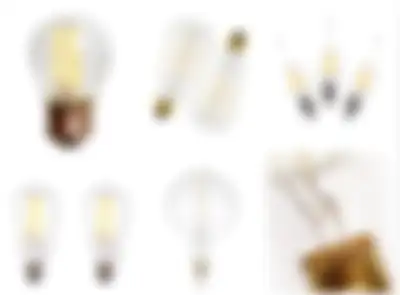
23 June 2025
Bright Ideas: Choosing the perfect globe!
Written by Lucy Reader
When it comes to lighting, the wattage numbers printed on a box can feel like a secret code. Once upon a time more watts meant more brightness, full stop. But with the rise of LEDs, wattage is now simply the “fuel” a globe burns, not a guarantee of light output. Two tiny numbers 2W and 4W can throw out more usable light than a traditional 25W or 40W incandescent, while using a fraction of the energy. Let’s decode how that works and help you choose the right bulb for every corner of your home.

LED vs Incandescent: A Quick Reality Check
Incandescent filaments glow by getting red-hot, wasting roughly 90% of the electricity you pay for as heat. LEDs, on the other hand, create light by passing current through a semiconductor. They stay cool, last up to 25 times longer, and convert as much as 85% of their energy into visible light. That means a 2W LED can rival the output of a 25W incandescent and a 4W LED can match a 40 W incandescent while cutting your power bill to pocket change.

Watts or Lumens?
When you’re shopping for bulbs, think of watts as the petrol in a car and lumens as the kilometres you actually travel. Watts measure how much electricity a globe consumes, but they say little about how bright the light will be, especially with modern LEDs that sip power. Lumens, on the other hand, tell you the true light output: the higher the lumens, the brighter the bulb, regardless of wattage. That’s why a 4-watt LED can rival a 40-watt incandescent in brightness while costing a fraction to run. Bottom line? Check lumens for brightness, watts for energy use, and you’ll never be left in the dark

Colour Temperature: Setting the Mood in Kelvins
Colour temperature measures how “warm” or “cool” light appears and is expressed in Kelvins (K):
- 2700 K – Warm White
Candle-like, inviting, ideal for bedrooms and living rooms. - 3000 K – Soft White
Balanced and flattering—think relaxed dinner parties and general spaces. - 4000 K – Cool White
Clean and energising, perfect for laundries or craft corners. - 5000 K+ – Daylight
Crisp and bluish, best reserved for garages, workshops, or photography setups.
Stick to one colour family per room to keep the mood cohesive, and use dimmers to shift intensity without changing the tone.

Ready to Light it up?
- Layer your lighting. Combine overhead, task, and accent lights so every corner is functional and flattering.
- Choose dimmable LEDs. They offer ultimate flexibility—from bright prep work to low-light movie nights.
- Mind the CRI (Colour Rendering Index). A CRI above 90 makes artwork, fabrics, and food look their true colours.
- Plan for longevity. Match bulb life to the effort required to change it; vaulted ceilings deserve 25 000-hour LEDs.
- Recycle responsibly. LEDs contain electronic components—check local drop-off points rather than tossing them in the bin.
Armed with lumen know-how, colour-temp savvy, and a clear LED advantage, you’re set to banish gloomy corners and soaring power bills alike. The next time you’re globe-shopping, focus on lumens for brightness, Kelvins for mood, and LED technology for savings. Your home (and wallet) will thank you every time you hit the switch.